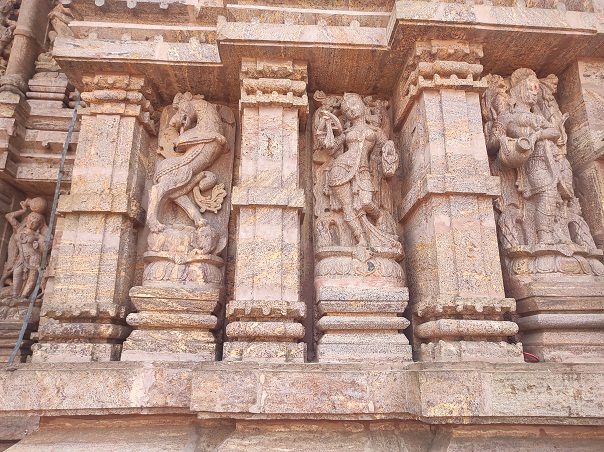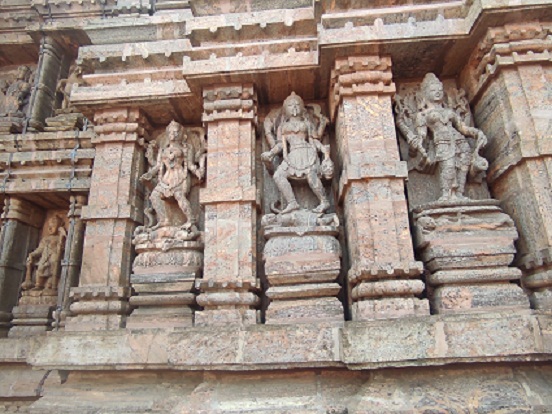Odisha is home to some of the famous temples in India that draw thousands of devotees, pilgrims and tourists from across the globe. If you are a culture vulture, architecture enthusiast or you are looking to immerse yourself in India’s rich history, then Odisha is a must-visit for you. The state, which has a thousand years history, is particularly reputed for its thousands of temples, which bear witness to the numerous sects and kings that have ruled the region.
Some are attractive ruins, while others are in near-immaculate condition, but Orissa’s temples are all beautiful and enticing that boasts of all the three major traditions namely Shaiva, Vaishnava and Shakta. In this post I shall be talking about Taratarini temple near Berhampur in Odisha which I visited a few days ago.
Taratarini temple is one among the major Shakti peethas in the country which sits atop Kumari hills on the banks of Rushikulya river about 32 kilometers from Behampur city in the Ganjam district of Odisha. The deity here is revered as the Breast Shrine (Sthana Peetha) and manifestations of Adi Shakti. Tara Tarini Shakti Peetha is one of the Mother Goddess’s oldest pilgrimage sites and one of India’s four major ancient Tantra Peetha and Shakti Peethas.
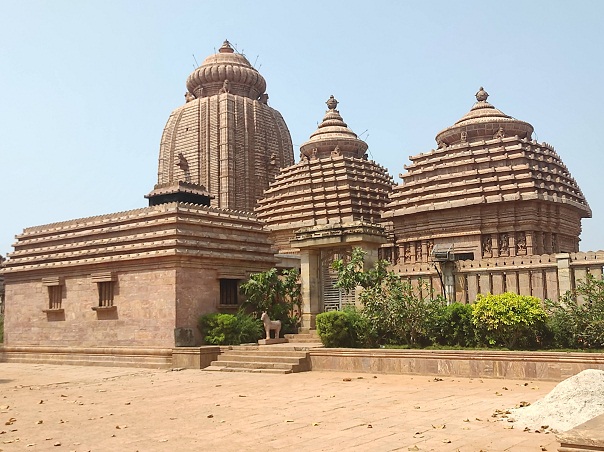
Related Article: Everything you need to know about Ranipur Jharial temples
Post Contents
What are Shakti peethas
In order to understand the origin of Shakti peethas, you must follow the mythological trail which led to the death of Lord Shiva’s wife Sati and the sequence of events culminating in the establishment of Shakti peethas across the Indian subcontinent.
According to legend Lord Brahma is said to have performed a yajna to please Shakti and Lord Shiva. Goddess Shakti sprang from Shiva, helping Brahma in the creation of the universe. Brahma was overjoyed and chose to return Shakti to Shiva. As a result, his son Daksha performed a number of yagnas in order to obtain Shakti as his daughter in the form of Sati. Sati was brought to this universe with the purpose of marrying her to Lord Shiva, as a part of his yagna.
Lord Shiva’s curse on Brahma caused him to lose his fifth head as a result of his lie in front of Shiva. Because of this, Daksha developed a hatred for Lord Shiva and resolved not to let Lord Shiva and Sati marry. However, Sati got attracted to Shiva and finally one day Shiva and Sati got married. This marriage only increased Daksha’s hatred towards Lord Shiva.
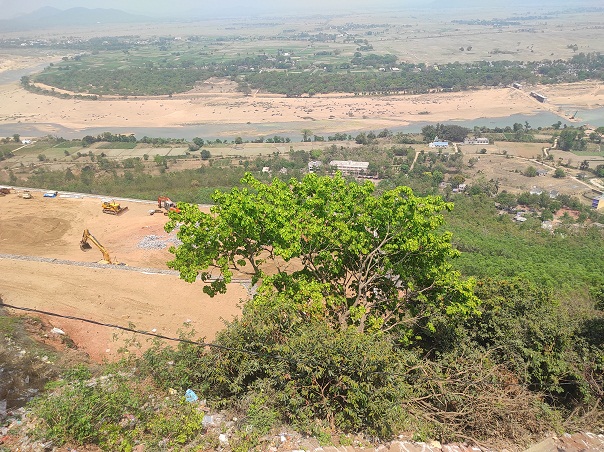
Daksha performed a yagna with a desire to take revenge on Lord Shiva. Daksha invited all the deities to the yajna except Lord Shiva and Sati. The fact that she was not invited did not deter Sati from attending the yagna. She expressed her desire to attend the yagna to Shiva, who tried his best to dissuade her from going. Shiva eventually relented and Sati went to the yagna. Sati, being an uninvited guest, was not given any respect at the yagna. Furthermore, Daksha insulted Shiva. Sati was unable to bear her father’s insults toward her husband, so she immolated herself.
When the news reached Shiva, he went violent in rage. He carried Sati’s body on his shoulders and began performing tandava, the dance of destruction. Shiva’s dance threatened the balance of the Universe, so Lord Vishnu cut up Sati’s body with his sudarshan chakra to protect the human world.The body was dismembered into 51 pieces, each of which fell in different places across the Indian subcontinent. These holy sites are known as Shakti peethas. 18 of these peethas are known as Mahashakti peethas while 4 are Adi Shakti peethas.
Do read: Bhojeshwar temple: The unfinished masterpiece of Bhopal
The four Adi Shakti Pithas
There are four famous temples that are called the Adi Shakti peethas including two in Odisha and one each in Assam and West Bengal . They are considered the most sacred of all the other peethas as vital organs of the Sati believed to have fallen in these sites. Shiva Purana and Kalika Purana attests to this claim.
The two in Odisha are Vimala Temple (pada khanda) located right inside Sri jagannath temple complex in Puri and Taratarini temple (Stana khanda) situated atop the Kumari hill near Berhampur in Ganjam district. The other two are Kamakshya Temple (yoni khanda) in Guwahati, Assam and Dakhin Kali Temple (mukha khanda) in Kolkata, West Bengal.
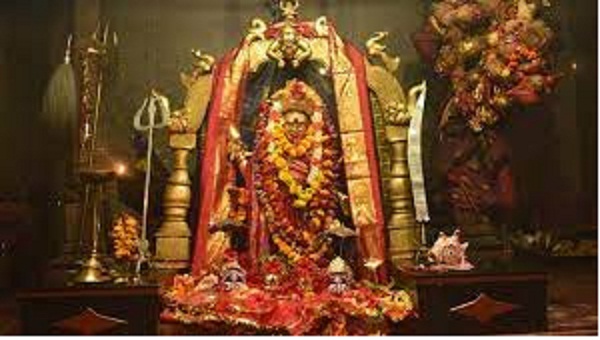
Taratarini temple as a Shakti Peetha
The Taratarini shrine is believed to be one of the most revered Shakti Peethas & Tantra Peethas and major pilgrimage sites of Shakta(Shaktism)sect of Hinduism. Shakti Peethas are holy abodes of Parashakti which believed to have originated from the historical story of falling off the body parts of the corpse of Sati Devi, when Shiva carried it and wandered across the universe.
There are 51 Shakti Peethas spread across the Indian subcontinent. 51 Shakti Peethas are believed to be representing the 51 letters in Sanskrit alphabet. Sati Devi’s breasts are said to have fallen here in Taratarini. The Shakti of the shrine is addressed as Maa Tara Devi and it is one of the four Adi Shakti peethas.
Taratarini, the Adi Shakti goddesses have been regarded as the presiding deity (Ista-Devi) in many parts of India and in most of the households in South Odisha. You can see the sacred river Rushikulya, which has been described in Rig Veda as ‘Gangayah Jyestha Bhagini’(the elder sister of the Ganga) flows near the temple in the foothills.
At the hilltop, the goddess is housed on a beautiful stone temple. Two stones anthropomorphized by the addition of gold and silver ornaments and shaped to be seen as human faces are the main idols of this temple which represent the goddesses Tara and Tarini. In between them are two fully acclaimed and beautiful brass heads as their Chalanti Pratima or their Living Image.
Also Read: Sanchi Stupa: All you need to know about this Buddhist treasure
History of Taratarini Temple
According to accessible historical accounts, the Mauryan Emperor Ashoka’s downfall of the Kalingan Empire and its capital Sampa (Samapa) in the Kalinga war around 2300 years ago strengthened the influence of Buddhists in this area of India. Sampa was about 7 kilometres away from Taratarini Hill Shrine at the time. As a result, academics think Taratarini was revered as the main deity (Ista-Devi) of the great Kalinga Empire.
After Ashoka conquered Kalinga, historians discovered it to be a well-known Buddhist centre. The location of Ganjam near the bank of the river Rushikulya was an active Buddhist site, as evidenced by the Special Rock Edicts of Ashoka found at Jaugada, 4 kilometres from Taratarini Hill Shrine.
Tara (Buddhism), an important deity in the Mahayana Buddhist Pantheon, has a Buddhist influence. The presence of an image of Buddha in meditation within the temple’s sanctum sanctorum lends credence to the site’s claim to be an ancient centre of the Buddhist Shakta cult.According to Mahayana Buddhist teachings, in the beginning, Buddhists did not believe in Goddess worship or Pratimapuja (Idol Worship).
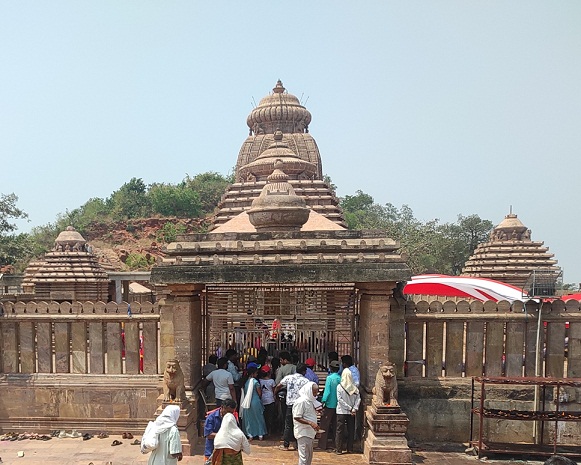
However, Mahayana ecclesiastical texts reveal that, beginning in the first century AD, after the fall of Kalinga, Mahayana Buddhists accepted the worship of Mother Goddess ‘Tara’ for the first time. Thus, there is no doubt that Buddhists acquired the concept of ‘Tara’ Puja from this shrine. These facts are also corroborated by Bouddha Tantrik texts, Vajrajani sect texts, and Hindu Tantrik texts.
Researchers contend that in the beginning, Buddhists worshipped Taratarini, the major seat of Tantrik sect in Hinduism at the time, as Bouddha Tara, and afterwards embraced ‘Tara’ as the Tantrik deity or spouse of bodhisattva Avalokiteshvara in their belief system. This ‘Tara’ devotion gradually spread to other parts of the world.
Apart from the Buddhist Tantrikas, the maritime history of Kalinga indicates that Sadhavas, merchants, and seamen worshipped Tara before embarking on their sea voyage from major sea ports like Dantapura (Gopalpur), Pallur near Chilika Lake, Kalingapatna (now in Andhra Pradesh), and the river Rushikulya. All of the ancient world’s major seaports were close to the Taratarini hill shrine.
You may also Like: Bodh Gaya travel: A self-enlighening journey into the land of Buddha
Architecture of Taratarini Temple
The temple that you now see is a new one that has replaced the old concrete temple of the British era. The present temple is a unique modern temple structure bearing complicated carvings. The temple construction follows the traditional Kalinga temple architecture or the Rekha architecture style and is quite similar to Sri Jagannath Temple in Puri and Lingaraj temple of Bhubaneswar. Horizontal and parallel lines bear characteristics of this kind of architecture. It has been built at a cost of around Rs. 2.50 crores as per the architectural norms of ancient Orissa temple architecture.
The lintels for the new temple are made of massive black granite slabs. You can see the replica of Mukteswar Temple’s (Bhubaneswar) iconic arch in front of the newly built temple. This modern temple was designed by sculptor Raghunath Mohapatra.’ Thus, the hill shrine has been transformed into an important tourist destination in Odisha, complete with a beautiful sandstone temple that adheres to all of the ideas and principles of ancient Orissan temple architecture.
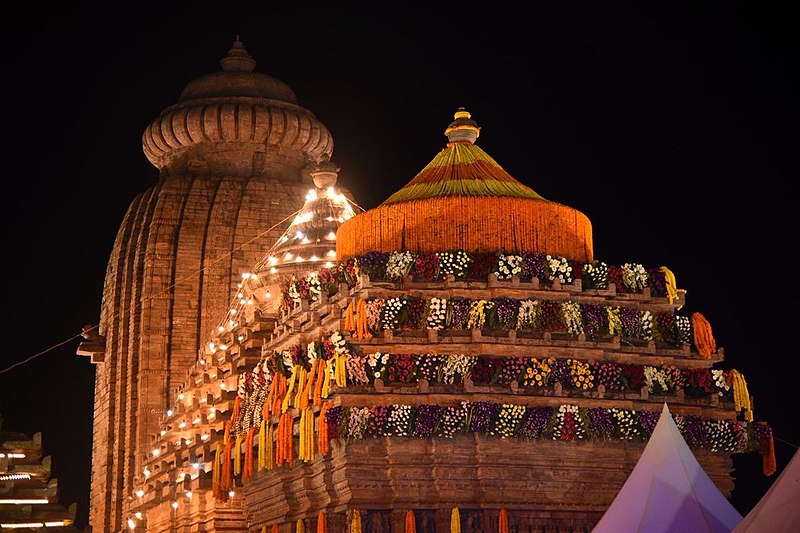
Festivals at Taratarini Temple
If you want to enjoy festivities at the hill shrine, then you need to visit Taratarini temple in the month of Chaitra. Taratarini Mela also known as Chaitra Parba/Chaitra Mela/Chaitra Yatra is the most famous of the festivals held at the Taratarini Hill Shrine.
It is held at the holy shrine on each Tuesday of the month of Chaitra, i.e. from mid-March to mid-April (according to the English calendar). Lakhs of devotees travel from all over the world to have darshan of the Goddess Tara Tarini and to perform their Manasika when their wishes have been fulfilled.Grand congregations take place on the 1st, 2nd, 3rd & 4th Tuesdays of this month. On Tuesday, the Shrine remains open for the Darshan of the deities from 1.00 AM (mid-night on Monday) till 11 PM (of Tuesday).
During that period, Pahada (daytime rest) of the deities is confined to night-time only. Devotees come to offer the first bunch of hair of the newborn babies with the belief that Goddesses Taratarini will protect the newborns from all evils and ensure their well-being. Taratarini Mela was held after a gap of two years with all fanfare last month. The festival had been canceled in 2020 and 2021 due to Covid-19.
Other festivals that are observed in Taratarini temples include Sankranti mela, Dola Purnima, Basantika Parba, Chitalagi Amabasya, Gamha Purnima, Saptapuri Amabasya, Saradiya Parba and Dipawali.
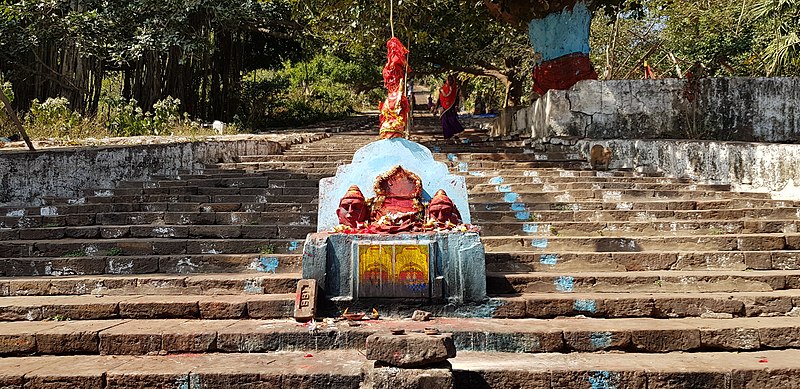
How to reach Taratarini Temple
To visit Taratarini temple, first you have to reach Berhampur in Odisha. The nearest airports are Biju Patnaik International Airport in Bhubaneswar (174 kms) and Visakhapatnam International Airport in Visakhapatnam (240 kms). From Bhubaneswar or Visakhapatnam you can travel to Berhampur either by train or road. Berhampur is also an important railway station in Odisha and you can get there from any major railway station in the country.
From Berhampur you need to hire a taxi to reach Taratarini temple which is about 32 kilometers away. From the foothills of the Kumari hill or the Tarini hill where the temple is seated, you have got three options to reach there as your vehicle is not allowed beyond this point..
First one is the 999 steps trek to the temple. This is the most difficult one and is preferred by the adventurous and the most religious visitors. Another option is to take the bus run by the temple management which charges Rs 20 per person for both to and fro. The last and the most exciting option for you is to take a cable car ride to reach the temple.
Recommended Read: Ellora Cave Monuments: Spirit of co-existance and religious tolerance through rock architectures
Stay options near Taratarini Temple
There are not many stay options available near Taratarini temple. The only good option is PANTHASALA (Hotel Nirupama) which is located at the foothills of Taratarini Temple and has three bedrooms and one dormitory. It is managed by the Orissa Tourism Department. For reservations, contact the Tourist Officer at Berhampur, Ganjam. 0680-2210980 is the phone number. But it is a good idea to stay in Berhampur which has decent accommodation facilities with hotels according to your budget..
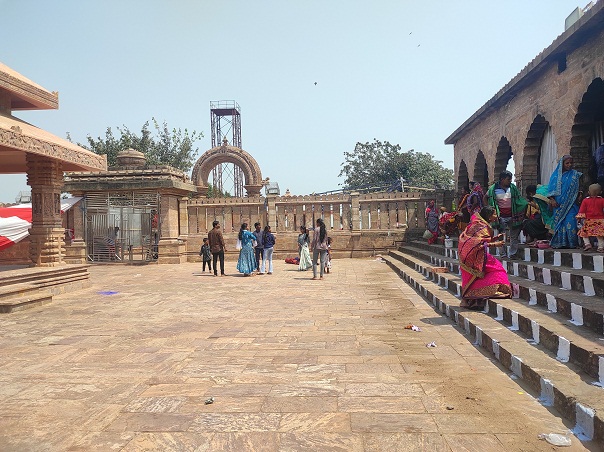
Taratarini Temple FAQs
Yes. The temple is now fully opened for all types of visitors including devotees, pilgrims and tourists after the state government allowed opening of places of worship earlier this year.
Yes. The two goddesses are referred to as Tara and Tarini. In mythology, Taratarini has been described as Stana Peetha as the breasts of Sati had fallen here. The two breasts are worshiped here as twin goddesses Tara and Tarini.
Maa Tarini is the presiding deity for all Shakti and Tantra peeths or shrines in Odisha. The origin of Shakti or worship of the Earth as a female embodiment of power is found across many cultures all over the world
Walking over 999 steps from the foot of the hill, to the hilltop under shadows of green plantation is very much amusing and pleasure making.


